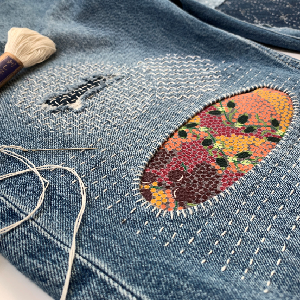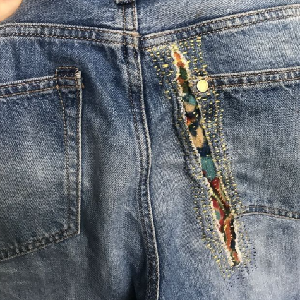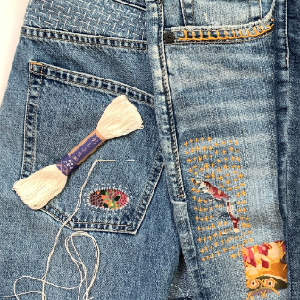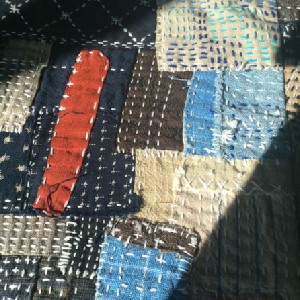 |
 |
 |
 |
 |
 |

Patching is not only a mending practice, but a decorative one as well. You can put patches on your clothing from brands, artists, bands, or whatever you like, but those patches can also be used for mending! Even old scraps of fabric can be used for patching, so long as the hole is being anchored by something!



Patching can involve putting fabric over the front of the hole or behind the hole. One covers it from the front and the patch is a main attraction, hiding the hole completely, or you can put the patch behind the hole.
When putting the patch behind, and using a blanket stitch to reinforce the hole, you can create a cute peeking color or pattern in the hole of your clothes. This is referred to as reverse applique, as the patch peeks through the hole.
Typical Applique mending is putting the fabric over the hole or worn spot to cover it. The ways of securing the patch varies, but popular stitches involve the straight stitch, blanket stitch, and herringbone stitch.
Sashiko, a Japanese method, involves the placement of a patch over the thread bare spot, or hole, and a patterned attachment method based on a grid. Sashiko was a popular method, because fabric was a treasured item. It was to be saved and reused. This changed once mass-produced textiles became popular, as it was cheaper and easier to buy new clothes instead of repairing them.
There are two methods of this type, Hitomezashi and Moyozashi. Hitomezashi is a method based on straight lines, and their intersections together as reinforcement. Moyozashi is curved, and features a single stitch running through, not overlapping or breaking at any point.
Another Japanese mending type called Boro stitching. It involves placing many scraps of fabric onto a backing cloth to create a random, mismatched material design. It can incorporate Sashiko stitching methods.


